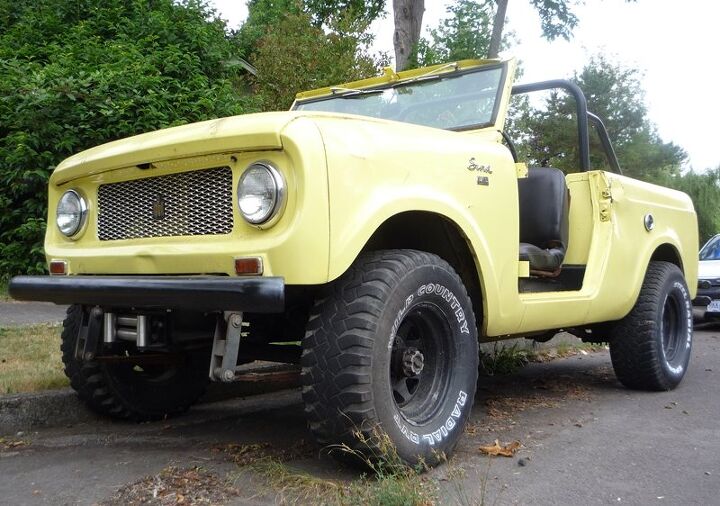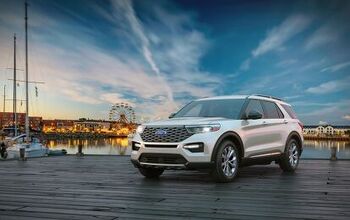Curbside Classic: 1963 IH Scout 80

The precise evolution of the SUV, like all car genres is debatable, but there’s no question that the International Scout is the critical link between the military Jeep and the modern SUV. It was the first vehicle of the genre to be designed from scratch to meet the anticipated growth in the off-road capable civilian market, and it clearly was the template for its many imitators: Ford Bronco, Range Rover, Chevy Blazer, Dodge Ramcharger, as well as the Mitsubishi Pajero/Montero (and others). True to its name, the Scout led the industry into the land of milk and SUV profits, even if it bowed out early.
International Harvester, which was then still a major manufacturer of pickups and utility wagons, took quite a leap of faith when it began the development of the Scout in the late 1950’s. The civilian Jeep actually sold rather poorly in that decade, in part because surplus military Jeeps were available for peanuts. But leap they did, although the project almost died along the way. Early designs were too angular, which rightfully didn’t inspire the execs. When a more rounded design similar to the final version emerged from a late night session, it finally created some enthusiasm.
The body design might have been a bit adventurous compared to the Jeep, but the grille material looks like it was bought at the hardware store. Kids, this is why they call them grilles, although it would surely make a fine and dandy grill.
Originally planned to be made out of molded plastic body components supplied by Goodyear, when that turned out to be too expensive, the design was adapted to steel. A sturdy frame was not outside of International’s expertise, and Dana transfer cases and axles were readily available.
That left the matter of an engine, since IH only built rather large and heavy sixes and V8s. The solution: cut their 304 CID V8 block in half, resulting in a slant four of 152 cubic inches. For a set of detailed pictures go here.
The 2.5 liter Comanche four carried a 93 horsepower rating. It was a rather rough running unit, but that was in character with the rest of the Scout, which despite its more modern body was still a pretty primitive vehicle, especially from today’s vantage point. The four had a good torque curve, which was important for off-roading, and it was as tough as the IH V8 that donated half its block to it. In 1965, there was even a turbocharged version of the four offered, probably for those Colorado high altitude off roaders. Wonder if any survived.
The Scout appeared in late 1960 and came as a mini-pickup version or the utility, with a removable top. All of the first series (80) Scouts came with a fold down windshield. The Scout 800, which appeared in 1965, did away with that, but brought a number of other improvements in comfort and convenience. The 800, built through 1971, also had more engine options on tap: a larger 196 four; AMC-sourced 232 six; and the smallest of the International’s V8s, the 266. The Scout II replaced the 80/800 in 1971, but we’ll save that for another CC.
There’s a surprising number of Scouts on the road here, many in more regular use than this weekend toy, which got rolled (slowly and gently in soft mud) a few years back, without harm to its driver. There’s even Mr. Scout, a repair and restoration shop. Given their simplicity and rugged construction, don’t expect them to disappear anytime too soon.

More by Paul Niedermeyer
Latest Car Reviews
Read moreLatest Product Reviews
Read moreRecent Comments
- Doug brockman There will be many many people living in apartments without dedicated charging facilities in future who will need personal vehicles to get to work and school and for whom mass transit will be an annoying inconvenience
- Jeff Self driving cars are not ready for prime time.
- Lichtronamo Watch as the non-us based automakers shift more production to Mexico in the future.
- 28-Cars-Later " Electrek recently dug around in Tesla’s online parts catalog and found that the windshield costs a whopping $1,900 to replace.To be fair, that’s around what a Mercedes S-Class or Rivian windshield costs, but the Tesla’s glass is unique because of its shape. It’s also worth noting that most insurance plans have glass replacement options that can make the repair a low- or zero-cost issue. "Now I understand why my insurance is so high despite no claims for years and about 7,500 annual miles between three cars.
- AMcA My theory is that that when the Big 3 gave away the store to the UAW in the last contract, there was a side deal in which the UAW promised to go after the non-organized transplant plants. Even the UAW understands that if the wage differential gets too high it's gonna kill the golden goose.










































Comments
Join the conversation
Had a friend that loved his Scout. Last I saw of it the body was more Bondo than metal - those tales about rust minimize the problem; these things would leave little piles of iron oxide wherever you parked them. He'd painted it a bright lime green and it ran - but he couldn't talk me into riding in it. These made the original Ford Bronco look like a luxury car.
These are really slow when there is a big ice cream freezer in them, like the one my brother drove one summer in Atlanta. Of course you didn't want the ice cream man to drive fast. You needed time to run in the house and check the couch cushions, etc.